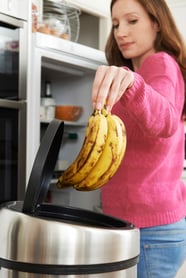Ways to Organize Your Kitchen – Part 2
September 09, 2016 • Admin

 You don't have to guard your wallet to implement organizational tools for your kitchen. All you need is to set aside some time and this second set of tricks to have the efficiency your kitchen has been waiting for. Consider:
You don't have to guard your wallet to implement organizational tools for your kitchen. All you need is to set aside some time and this second set of tricks to have the efficiency your kitchen has been waiting for. Consider:
- Coordinate a weekly “refrigerator clean-out day” with garbage day. Roll the garbage can to your refrigerator on garbage day and pitch spoiled (or spoiling) food. You will de-clutter your refrigerator, keep it smelling fresh and make it easier to see what you should replenish before heading to the grocery store. It might take a few weeks for you to appreciate how this one step will improve your kitchen's efficiency, but it's worth the wait.
- Streamline the storage of papers that stream into your home. As much as you may try to divert bills, schedules, calendars, menus and coupons to the home office, all this paper has a way of finding its way back to the kitchen. Instead of fighting the migration, surrender to it but tame it. A winning solution for a busy family: give everyone a wicker basket for their papers and label the baskets accordingly. Limit "generic” paper items to one kitchen drawer – not two, three or four – and toss the rest.
- Make the most of drawer dividers and compartments. The lack of them contribute to drawers stuffed to the brim with obscure utensils and odds and ends. When you must consign every item to a specific spot, you probably will scrutinize whether you really need it. And that's the point.
- Capitalize on vertical space. Available space is there, probably hiding in plain sight. Even the smallest kitchens feature cabinets with space below them to insert hooks for coffee mugs, wine glasses or gadgets. Open cabinet doors and either attach a spice rack or affix adhesive hooks to hang objects. If it suits your style, attach a rack to the ceiling for pots and pans.
- Press Lazy Susans into action. They come in all sizes and they're made of many materials, which mean, Lazy Susans can be tucked inside cabinets, on shelves and even in the refrigerator and freezer. Enhance their efficiency by placing small, graduated racks on top to store everything from vitamins and medications to canned foods and oils.
